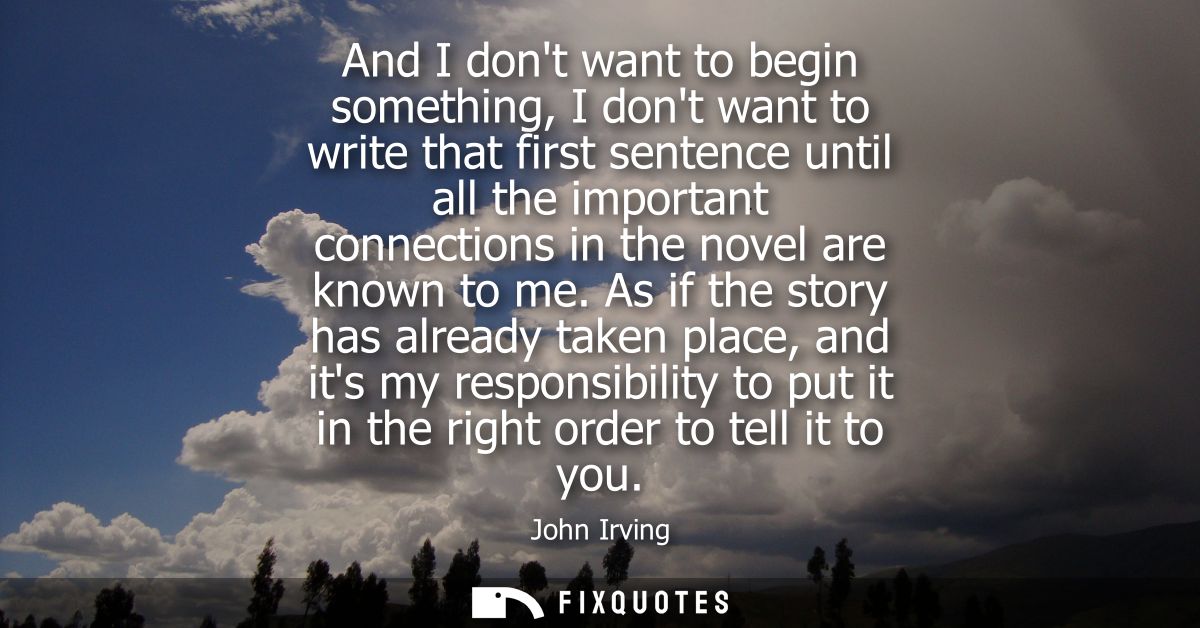"And I don't want to begin something, I don't want to write that first sentence until all the important connections in the novel are known to me. As if the story has already taken place, and it's my responsibility to put it in the right order to tell it to you"
About this Quote
John Irving’s approach to beginning a novel speaks to a deeply methodical, almost architectural mindset about storytelling. Rather than plunging into writing without a clear sense of direction, Irving waits until he has mapped out the intricate web of relationships, events, and themes that compose his narrative. This suggests a reverence for the complexity and cohesion of story, treating the creation of a novel as the discovery and assembly of something that already exists in a platonic ideal, a narrative waiting to be uncovered rather than invented.
This process echoes the work of a detective or historian, piecing together evidence to reconstruct what has happened. There’s a humility in Irving’s stance; rather than asserting dominance over his narrative, he frames himself as a custodian, someone entrusted with the care of conveying a story that is, in essence, already real and complete. The notion that "the story has already taken place" suggests that writing is less about invention and more about revelation, as if the facts of the novel reside somewhere out of sight and are waiting for the attentive author to draw them forward into the light.
The importance Irving places on "all the important connections" alludes to the web of causality, motivation, and consequence underpinning any rich narrative. The first sentence, for Irving, is more than an opening, it is a critical threshold that determines how the reader will enter the world of the story. If the writer ventures the first sentence without a clear conception of the whole, connections risk being vague, motivations muddled, and the meaning of events diminished. For Irving, the task of writing is to honor the integrity of that imagined reality: to record it as faithfully and compellingly as possible, assembling it in "the right order" so the reader receives not just entertainment, but a genuine sense of how all the parts fit together.
More details
About the Author

